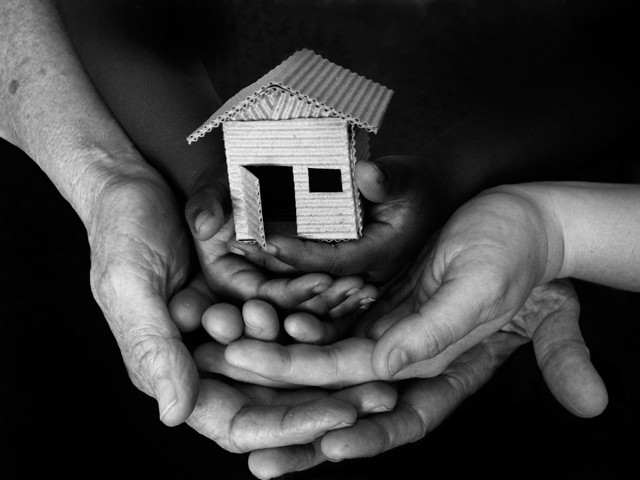What Makes Housing Stability the Foundation of a Better Life?
Housing stability represents far more than simply having a roof over your head. It encompasses the security, affordability, and sustainability of your living situation that allows you to build a meaningful life without the constant worry of displacement. In today’s challenging housing market, understanding the difference between stable housing and housing instability has become crucial for millions of families seeking secure homes.
Home stability affects every aspect of your daily life, from your children’s education to your ability to maintain employment and build lasting relationships within your community. When you have stable housing, you can focus on personal growth, career advancement, and family well-being instead of constantly searching for your next place to live.

The concept of housing stability goes beyond basic shelter needs. It includes living in a place that you can afford long-term, where you feel safe and secure, and where you have reasonable certainty that you won’t face unexpected displacement. This stability creates the foundation for individuals and families to thrive rather than merely survive.
Recognizing the Signs and Causes of Housing Instability
Housing instability manifests in various ways that can significantly impact your quality of life and future opportunities. Understanding these warning signs helps you take proactive steps before a housing crisis develops. Common indicators include spending more than thirty percent of your income on housing costs, facing frequent moves due to unaffordable rent increases, or living in overcrowded conditions with family or friends.
The root causes of housing instability often stem from economic factors beyond individual control. Job loss, medical emergencies, divorce, or unexpected expenses can quickly transform a stable housing situation into a precarious one. Additionally, the shortage of affordable housing in many communities means that even working families may struggle to find suitable accommodations within their budget.
Mental health challenges, substance abuse issues, and domestic violence situations also contribute to housing instability. These complex circumstances require comprehensive support systems that address both immediate housing needs and underlying challenges. Without proper intervention, temporary housing problems can escalate into chronic homelessness or ongoing residential instability.
How Supported Housing Programs Transform Lives
Supported housing represents an innovative approach that combines affordable accommodation with comprehensive services designed to help individuals maintain their housing long-term. These programs recognize that simply providing a place to live isn’t enough for people facing complex challenges that contributed to their housing instability.
The services included in supported housing programs typically encompass case management, mental health counseling, substance abuse treatment, job training, financial literacy education, and life skills development. This holistic approach addresses the root causes of housing problems while providing the ongoing support needed to maintain housing stability.

Research consistently demonstrates that supported housing programs achieve remarkable success rates in helping people maintain stable accommodation. Supportive housing, a highly effective strategy that combines affordable housing with intensive coordinated services, can help the most vulnerable people in America maintain a stable home. Participants in these programs experience reduced hospitalizations, decreased involvement with the criminal justice system, and improved overall quality of life.
Building Your Path to Long-Term Home Stability
Achieving sustainable home stability requires strategic planning and often professional guidance to navigate complex housing systems and available resources. The first step involves conducting an honest assessment of your current housing situation, including your income, expenses, and any factors that might threaten your housing security in the future.
Financial planning plays a crucial role in maintaining home stability. This includes creating an emergency fund specifically for housing costs, understanding your rights as a tenant or homeowner, and exploring available assistance programs before you face a crisis. Many communities offer housing counseling services that can help you develop a personalized plan for achieving and maintaining stable housing.
Building strong connections within your community also supports long-term home stability. These relationships can provide emotional support during challenging times, practical assistance when needed, and valuable information about local resources and opportunities. Community involvement creates a sense of belonging that makes your housing situation feel more secure and permanent.
Navigating Available Resources and Support Systems
Numerous programs and services exist to help individuals and families achieve housing stability, but navigating these resources can feel overwhelming without proper guidance. Federal programs like Housing Choice Vouchers, public housing, and emergency rental assistance provide crucial support for eligible households facing housing challenges.
State and local governments also offer various housing stability programs tailored to their communities’ specific needs. The HSS Program funds the Texas Access to Justice Foundation (TAJF) in partnership with 10 organizations statewide to provide counsel to accompany low-income households to their eviction proceedings, provide mediation services between tenants and landlords, and provide local in-person and online housing clinics to assist low-income households. These programs often include legal assistance, mediation services, and financial aid to prevent evictions.
Non-profit organizations play an essential role in the housing stability landscape by providing specialized services and advocacy for vulnerable populations. These organizations often have deep knowledge of local resources and can help you access multiple types of assistance simultaneously, maximizing your chances of achieving stable housing.
The Future of Housing Stability: Trends and Innovations
The housing landscape continues evolving with new approaches to addressing housing instability and promoting long-term stability for all community members. With high mortgage rates and record-setting prices, 2024 was a tough year for the U.S. housing market. However, innovative solutions are emerging to address these challenges and create more pathways to housing stability.
Technology is increasingly being used to improve access to housing services and streamline the application process for assistance programs. Online platforms now allow people to apply for multiple housing programs simultaneously, reducing barriers and wait times. Mobile apps help tenants understand their rights and connect with legal resources when facing housing challenges.

Policy makers are also exploring new models for creating affordable housing and preventing housing instability. These include inclusionary zoning requirements, community land trusts, and innovative financing mechanisms that make homeownership more accessible to moderate-income families. The focus is shifting from merely responding to housing crises to preventing them through proactive intervention and support.
Take Action Today: Your Next Steps Toward Housing Security
Achieving housing stability requires taking proactive steps rather than waiting until you face a housing crisis. Start by assessing your current situation honestly and identifying any potential risks to your housing security. This might include evaluating your income stability, understanding your lease terms, or addressing any underlying issues that could affect your ability to maintain housing.
Connect with local housing resources in your community before you need them. Many areas have housing resource centers, tenant rights organizations, and financial counseling services that can provide valuable information and support. Building these connections early means you’ll know where to turn if challenges arise.

At Guide2Care.org, we understand that navigating housing stability can feel overwhelming, especially when you’re facing challenges or uncertainty about your housing future. Our experienced team specializes in connecting individuals and families with appropriate housing resources and supported housing programs that match their specific needs and circumstances.
Frequently Asked Questions About Housing Stability
What exactly is housing stability and why does it matter?
Housing stability means having secure, affordable housing that you can maintain long-term without fear of unexpected displacement. It matters because stable housing provides the foundation for success in education, employment, health, and relationships.
How do I know if I’m experiencing housing instability?
Signs of housing instability include spending more than 30% of income on housing, frequent moves, overcrowded living conditions, or constant worry about losing your housing. If any of these apply to you, seeking assistance early can prevent a housing crisis.
What services are included in supported housing programs?
Supported housing programs typically combine affordable housing with services like case management, counseling, job training, financial education, and life skills development to help individuals maintain housing stability long-term.
Are there housing assistance programs available in my area?
Most communities have various housing assistance programs, including emergency rental aid, housing vouchers, and eviction prevention services. Contact your local housing authority or community action agency to learn about available programs.
How can I improve my housing stability if I’m currently struggling?
Start by contacting local housing counseling services, exploring available assistance programs, creating a budget that prioritizes housing costs, and addressing any underlying issues that might threaten your housing security.
Contact Guide2Care.org for Personalized Housing Stability Support
Don’t navigate housing challenges alone. Guide2Care.org provides comprehensive guidance and support for individuals and families seeking housing stability solutions. Our services are available to residents of the United States,
Whether you’re facing housing instability, seeking supported housing options, or working to improve your home stability, our experienced team can connect you with appropriate resources and provide the guidance you need to achieve your housing goals.
Ready to take the next step toward housing security?
Contact Guide2Care.org today to speak with one of our housing specialists who can help you develop a personalized plan for achieving and maintaining housing stability. Your journey toward secure, stable housing starts with a single conversation – reach out to us now and discover the support and resources available to help you build a stable foundation for your future.




